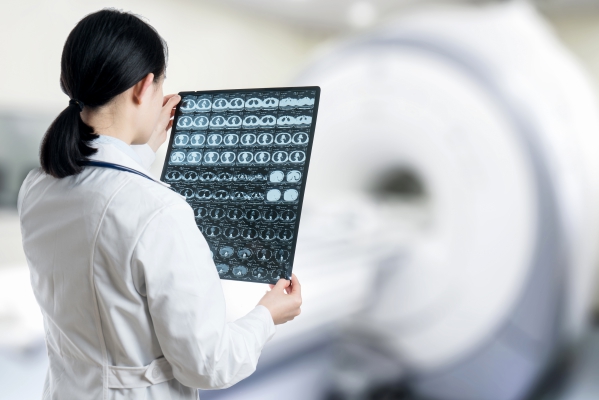What is Pancreatic cancer?
The pancreas is a gland found near your stomach that is responsible for the release of hormones and enzymes that carry important functions in digestion and blood sugar level regulation. In some people, cancer may develop in this organ. Pancreatic cancer is the 10th most common cancer in men and the 9th most common in women. It accounts for around 8% of all deaths caused by cancer.
Pancreatic cancer is unfortunately difficult to diagnose during its early stages. When the diagnosis is made, the cancer has already spread in most individuals. This is called metastasis and it is when the cancer affects surrounding or distant organs. The most commonly affected distant organs during metastasis are the liver and the lungs while the most commonly affected surrounding organs include the stomach and the large intestine.
It has been estimated by the American Cancer Society that in 2020, around 57,600 people will be newly diagnosed with the disease. Pancreatic cancer is rare among people aged less than 45 years old. The frequency of the condition increases with increasing age.
There are several treatment options available to treat pancreatic cancer and the choice will depend on the extent of the disease at diagnosis.
Causes and risk factors of Pancreatic cancer
There are several factors that may cause or increase your risk of having pancreatic cancer. These include:

- Tobacco smoking: This is the most common known environmental risk factor for pancreatic cancer. Studies have shown that tobacco smoking causes up to 30% of all the cases. If you smoke, you are twice more at risk of having the disease compared to people who do not smoke. It takes 5-10 years of smoking cessation to reduce your risk to similar to that of non-smokers.
- Obesity and diet: People who are obese are more likely to have pancreatic cancer. You are less at risk if you consume a lot of fresh fruits and vegetables. Excessive consumption of processed foods increase your likelihood of having pancreatic cancer.
- Diabetes: People who have been diabetic for at least 5 years are prone to have pancreatic cancer.
- Chronic pancreatitis: Long-standing inflammation of the pancreas is an important risk factor for developing pancreatic cancer. Studies have shown that if you have chronic pancreatitis, you are 26 times more prone to end up with pancreatic cancer.
- Genetics: Pancreatic cancer is due to a genetic cause in about 5-10% of people. There are some familial genes that can be inherited causing the disease later in life.
- Race: In the United States, being a black male increases your risk of having the disease. The exact reason is however unknown.
Signs and symptoms
In the early stages of the disease, the signs and symptoms are usually not specific and subtle. Some of the signs and symptoms may include:

- Anorexia
- Malaise
- Nausea
- Fatigue
- Upper abdominal pain
- Back pain
With progression of the disease, other symptoms may occur:
- Significant and unintentional weight loss
- Upper abdominal pain that moves to the back
- Abdominal pain mostly at night
- Pain after eating or when lying flat
- Diarrhoea
- Pungent smelling and greasy stools (difficult to flush away)
- Early feeling of fullness when eating
- Yellowing of skin, itchy skin, darkening of urine and pale stools (if the pancreatic cancer causes obstruction to the outflow of bile – obstructive jaundice)

Making a diagnosis
Your doctor will start by taking a detailed history from you. He/she will then examine you for any other signs and symptoms associated with gastrointestinal diseases. Several tests can be used to help in making the diagnosis of pancreatic cancer. These include:
- Laboratory tests: If the cancer is causing obstruction to the outflow of bile into the gastrointestinal tract, this leads to obstructive jaundice. In this case, the level of bilirubin in the blood will be elevated. Amylase and lipase levels in the blood may also be increased. Other tests may be done to look for tumour markers which are substances found in your blood produced by cancer cells in your body. These include carbohydrate antigen (CA) 19-9 and carcinoembryonic antigen (CEA).
- Computed tomography (CT) scan: This is an imaging modality used to visualise the structures found in the abdomen. The size and exact location of the pancreatic cancer can be evaluated using CT scan. It can also be used to assess whether the cancer has spread to surrounding structures.
- Endoscopic ultrasonography: In this procedure, a tube with an ultrasound transducer on its end is inserted through your mouth until it reaches your stomach. It is then used to visualise the different parts of the pancreas.
- Endoscopic retrograde cholangiopancreatography (ERCP): This is procedure that allows detailed visualization of the pancreas and the biliary system to look for any mass or obstruction. In this procedure, a dye is injected into the ducts of your pancreas and biliary system through a flexible tube inserted in your gastrointestinal tract. X-rays are then taken and the dye appears on the films as an outline of the structures.
- Magnetic resonance imaging (MRI): This imaging technique also allows detailed visualisation of the organs involved. It also allows proper evaluation of cancer spread.
- Biopsy: This technique is used to take a sample of your pancreas using a needle. This sample is then sent into a laboratory for examination to look for the presence of cancer cells.

Treatment of Pancreatic cancer
The management of pancreatic cancer depends on the extent, staging and location of the cancer. The main goal of the treatment is to remove the cancer, however, in some cases, when the cancer has spread, resection is not possible.

There are several treatments available for pancreatic cancer including:
- Surgery: The preferred surgical procedure depends on the exact location of the cancer on the pancreas. The pancreas is an organ divided into 3 parts namely the head, body and tail. If the cancer is found on the head of the pancreas, the surgery performed is called a Whipple procedure. This involves the removal of the head of the pancreas as well as the initial part of the small intestine called the duodenum, the gallbladder and part of the bile duct. In certain cases, part of the stomach and large intestine may also require removal. If the cancer is located on the body or tail of the pancreas, these parts are removed leaving behind the head of the organ. Sometimes, the whole pancreas is removed and you will have to remain on lifelong insulin and pancreatic enzymes replacements.
- Chemotherapy: This involves the injection of anti-cancer drugs into your veins or the drugs can be taken orally. These drugs work by killing cancer cells. This can be used in combination with radiation therapy, discussed below. This combination is effective in shrinking tumours. Chemotherapy can also be used after surgery to prevent the recurrence of cancer.
- Radiation therapy: In this therapy, beams of high energy are used to kill cancer cells. It can be done before or after surgery. It can be used in combination with chemotherapy in cases where the cancer is not resectable.
- Palliative treatment: In patients who are not undergoing surgery, treatment has to be focused to alleviating bothersome symptoms. This include pain relief, radiation therapy and alleviating obstruction by the use of an endoscope.

Complications
Complications related to pancreatic cancer may be due to the disease itself as well as the treatments options for the disease. These include:
- Loss of weight: This is a common complaint and complication due to the cancer itself. It is often associated with nausea and vomiting. It can also be a side effect of the harsh medications used in the treatment of pancreatic cancer.
- Surgical complications: Complications related to the surgical treatment of pancreatic cancer include infection and risk of bleeding. There may also be a lifelong need for insulin injections and enzyme replacement.
- Chemotherapy: The most common side effects of chemotherapy include fatigue, hair loss, nausea and vomiting as well as infections, loss of appetite, anemia and constipation.
Prevention
The following measures can be implemented to reduce your risk of having pancreatic cancer:
- Smoking cessation: If you smoke, your doctor may refer you to a smoking cessation clinic in order to help you to stop smoking.
- Maintain a healthy weight: It is important for you to maintain a healthy weight to decrease your risk of having pancreatic cancer. If you are overweight, it is important for you to lose weight by exercising and eating healthy.

Prognosis
The prognosis of the disease depends on its extent and grading. In general, pancreatic cancer is considered aggressive and is difficult to cure. This is mostly due to the diagnosis made in late stages where the cancer has most likely spread to other organs. Over the years, survival rates have increased with advanced researches and treatment.

Source:
Parveen, K. and Michael, C., 2017. Kumar & Clark's Clinical Medicine. 9th ed. The Netherlands: ELSEVIER.
Dragovich, T., 2020. Pancreatic Cancer.
J. Alastair, I. and Simon, M., 2016. Davidson's Essentials of Medicine. 2nd ed. London: ELSEVIER.
Cancer Stat Facts: Pancreatic Cancer. National Cancer Institute.



